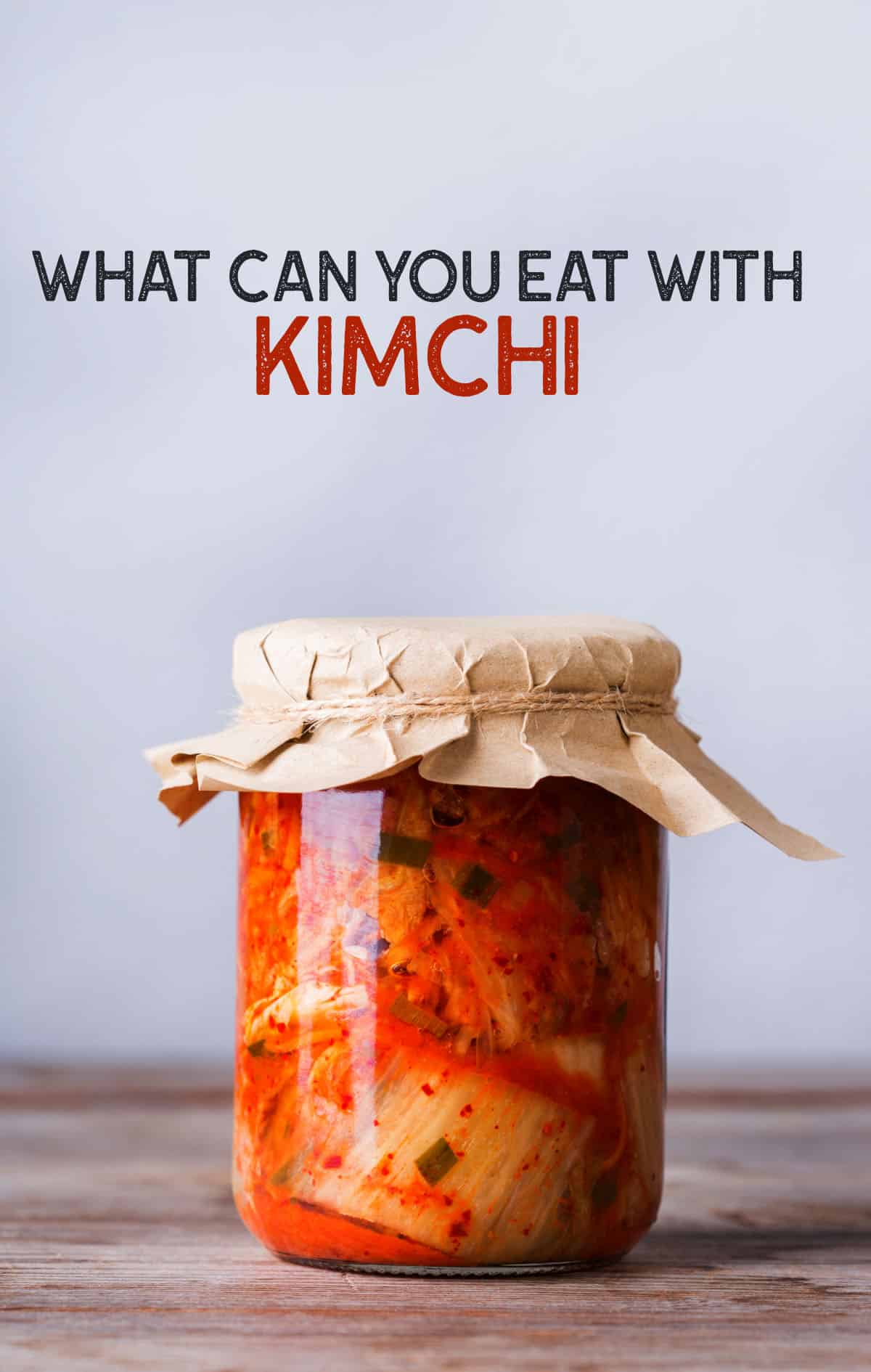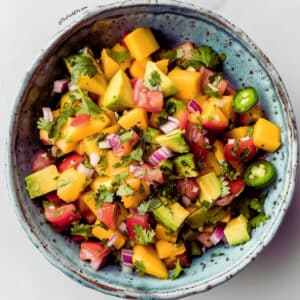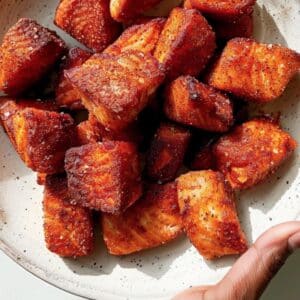This article aims to explore and showcase a diverse range of food pairings with Kimchi, highlighting its versatility as a key ingredient in Korean cuisine and beyond. It also seeks to inspire readers to incorporate Kimchi into their everyday cooking and dining experiences by introducing various dishes, from traditional Korean meals to fusion and international cuisines.
Why it Works
- Versatility: Kimchi's bold and tangy flavors make it an incredibly versatile ingredient that can be paired with a wide range of dishes.
- Balance: Kimchi's spicy and tangy notes can provide a perfect balance and contrast to rich, savory, or sweet dishes, enhancing the overall taste experience.
- Creativity: Kimchi encourages culinary creativity, as its unique flavor profile can inspire new and exciting dishes or add a twist to classic favorites.

A brief overview of Kimchi
Kimchi is a traditional Korean side dish made from fermented vegetables, most commonly Napa cabbage or radish, and various seasonings, including gochugaru (Korean red chili pepper flakes), garlic, ginger, and fish sauce.
The kimchi fermentation process involves the growth of lactic acid bacteria, giving the dish its tangy and slightly sour taste. This fermentation process has numerous health benefits, as Kimchi is rich in probiotics, vitamins, and minerals.
Kimchi can vary in flavor, spiciness, and texture, depending on the type of vegetables used and the specific recipe. There are hundreds of different types of Kimchi, each with its unique taste profile, which makes it a versatile and dynamic ingredient that can be enjoyed on its own or paired with a wide variety of dishes.
Read:
What are the types of Kimchi?
1 Baechu-kimchi (Napa cabbage kimchi):
Baechu-kimchi, featuring Napa cabbage as its main ingredient, is the most well-known and widely-enjoyed type of Kimchi. It boasts a combination of spicy, tangy, and umami flavors, achieved through fermentation involving a flavorful paste made from gochugaru, garlic, ginger, fish sauce, or other alternatives. The fermentation process enhances the taste and develops a crisp texture, making Baechu-kimchi a versatile and delicious accompaniment to various dishes.
2 Kkakdugi (radish kimchi):
Kkakdugi is a popular type of Kimchi made from cubed Korean radish. Its crunchy texture and flavor profile characterize it, combining spicy, tangy, and slightly sweet notes. The fermentation process, which involves a seasoning paste, infuses the radish cubes with vibrant flavors, making Kkakdugi a delightful and versatile side dish that pairs well with various meals.
3 Oi-sobagi (cucumber kimchi):
Oi-sobagi, a cucumber-based kimchi, offers a refreshing blend of spicy, tangy, and subtly sweet flavors from the fermentation process with a seasoning paste. The cucumbers' crisp and crunchy texture makes Oi-sobagi a refreshing and delightful side dish, perfect for complementing and elevating diverse culinary creations.
4 Pa-kimchi (green onion kimchi):
Pa-kimchi, featuring green onions as its primary ingredient, presents a harmonious fusion of spicy, tangy, and slightly savory flavors achieved through fermentation with a specially prepared seasoning paste. The green onions' tender yet slightly crisp texture adds a distinctive touch to this delightful side dish, making it an excellent choice for flavoring various meals.
5 Yeolmu-kimchi (young radish kimchi):
Yeolmu-kimchi, made with young radishes, showcases a delightful combination of spicy, tangy, and mildly sweet flavors, which come to life through fermentation using a unique seasoning paste. The tender yet the pleasantly crunchy texture of young radishes set this Kimchi apart, offering a fresh and appetizing addition to a wide range of culinary experiences.
What to eat with Kimchi (Recipe & Pairings)
Whether you're new to Kimchi or a long-time fan, the following suggestions will inspire you to incorporate this beloved Korean side dish into your culinary adventures, taking your taste buds on a flavorful journey.
1 Rice and Grain Dishes
Steamed White
Rice Steamed white rice serves as a staple in Korean cuisine, providing a simple and neutral base that pairs perfectly with the bold flavors of Kimchi. The mild taste and fluffy texture of white rice create a harmonious balance with the spiciness and tanginess of Kimchi, enhancing the overall dining experience.
Kimchi Fried Rice (Kimchi Bokkeumbap)
Kimchi fried rice, or Kimchi bokkeumbap, is a popular Korean dish that incorporates Kimchi as its main ingredient. This savory dish combines cooked rice, Kimchi, various vegetables, and optional protein sources like eggs or meat. The rich flavors of Kimchi infuse the rice, creating a delicious and satisfying meal that highlights the versatility of Kimchi.
Bibimbap (Mixed Rice with Vegetables)
Bibimbap is a traditional Korean mixed rice dish with steamed white rice, various vegetables, protein sources such as beef or tofu, and gochujang (Korean red chili pepper paste). Adding Kimchi to this colorful and nutritious dish further elevates its flavor profile, blending well with the other ingredients and contributing a spicy, tangy kick.
Japchae (Stir-Fried Glass Noodles)
Japchae is a popular Korean dish made from sweet potato glass noodles stir-fried with various vegetables, thinly sliced meat, and a savory-sweet sauce. The tangy, spicy Kimchi balances the glass noodles' mild, slightly sweet taste, creating a delightful combination. Pairing japchae with Kimchi adds a complementary contrast of flavors and textures.
2 Soup and stew
Kimchi Jjigae (Kimchi Stew)
Kimchi jjigae is a hearty Korean stew that features Kimchi as its star ingredient. It combines aged, fermented Kimchi with pork, tofu, vegetables, and a savory broth, creating a warming and comforting dish. The bold, tangy flavors of Kimchi permeate the stew, making it an ideal pairing for those who love the taste of Kimchi.
Doenjang Jjigae (Soybean Paste Stew)
Doenjang jjigae is a flavorful Korean stew made with doenjang (fermented soybean paste), vegetables, tofu, and often seafood or meat. The rich, umami taste of the soybean paste pairs well with Kimchi's tangy, spicy flavors, offering a harmonious combination that satisfies the palate.
Sundubu Jjigae (Soft Tofu Stew)
Sundubu jjigae is a spicy Korean stew featuring soft tofu, vegetables, and often seafood or meat cooked in a gochujang (Korean red chili pepper paste) based broth. Adding Kimchi to this dish contributes an extra layer of tanginess and spice, complementing the soft tofu and creating a mouthwatering fusion of flavors.
Seolleongtang (Ox Bone Soup)
Seolleongtang is a traditional Korean soup made from slow-simmered ox bones, which results in a rich, milky-white broth. The soup typically includes tender slices of beef and is served with rice and noodles. The mild, savory flavors of Seolleongtang pair well with Kimchi's bold, spicy taste, offering a refreshing contrast that enhances the overall dining experience.
3 Meat and Poultry Dishes
Samgyeopsal (Grilled Pork Belly)
Samgyeopsal is a popular Korean barbecue dish featuring thick slices of grilled pork belly. Kimchi's tangy, spicy taste complements the pork's rich, fatty flavors. Often, samgyeopsal is enjoyed by wrapping the grilled meat and Kimchi in lettuce leaves, creating a perfect bite-sized combination of flavors and textures.
Bulgogi (Marinated Beef)
Bulgogi is a classic Korean dish made from thinly sliced, marinated beef that is grilled or pan-fried—the sweet and savory marinade pairs beautifully with Kimchi's bold, tangy flavors. Serving bulgogi alongside Kimchi adds a vibrant contrast in taste and provides a refreshing balance to the dish.
Dakgalbi (Spicy Stir-Fried Chicken)
Dakgalbi is a flavorful Korean dish that consists of marinated, spicy chicken stir-fried with vegetables, rice cakes, and sweet potatoes. The spicy, slightly sweet sauce used in dakgalbi harmonizes with Kimchi's tangy, fiery taste, creating a delightful interplay of flavors to satisfy spice lovers.
Jeyuk Bokkeum (Spicy Pork Stir-Fry)
Jeyuk bokkeum is a delectable Korean dish featuring thinly sliced pork stir-fried in a spicy, savory sauce with vegetables. The bold, spicy flavors of the pork and sauce meld wonderfully with the tangy, piquant taste of Kimchi, offering an irresistible combination that leaves your taste buds craving more.
4 Seafood Dishes
Haemul Pajeon (Seafood Pancake)
Haemul pajeon is a delicious Korean pancake with various seafood, green onions, and a savory batter. The crispy exterior and tender, flavorful filling of the pancake pair exceptionally well with Kimchi's tangy, spicy kick, creating a delightful contrast that enhances both dishes.
Grilled Fish
Grilled fish is a popular and healthy choice in Korean cuisine, often featuring tender, flaky fish with a slightly smoky flavor from the grilling process. Pairing grilled fish with Kimchi adds a bold, tangy dimension to the dish, complementing the delicate flavors of the fish and offering a deliciously balanced dining experience.
Ojingeo Bokkeum (Stir-Fried Squid)
Ojingeo bokkeum is a tasty Korean dish with squid stir-fried in a spicy, savory sauce with vegetables. The chewy texture and mild taste of the squid harmonize with Kimchi's fiery, tangy flavors, resulting in a mouthwatering combination that will please seafood and spice enthusiasts alike.
Godeungeo Gui (Grilled Mackerel)
Godeungeo gui is a traditional Korean dish featuring grilled mackerel with a slightly crispy exterior and tender, flavorful flesh. The rich, savory taste of the mackerel is beautifully complemented by the spicy, tangy notes of Kimchi, creating a satisfying and well-rounded meal that highlights the best of both ingredients.
5 Vegetable and Tofu Dishes
Dubu-kimchi (Stir-fried Tofu with Kimchi)
Dubu-kimchi is a delicious Korean dish that combines stir-fried tofu with Kimchi. The soft, mild taste of tofu works perfectly with Kimchi's bold, tangy flavors, creating a delightful harmony of flavors and textures. This dish is a satisfying and nutritious option for vegetarians and tofu lovers alike.
Bossam (Boiled Pork with Lettuce Wraps)
Bossam is a popular Korean dish featuring tender, boiled pork with lettuce wraps, various accompaniments, and dipping sauces. Adding Kimchi to the lettuce wraps and succulent pork creates a mouthwatering combination of textures and flavors. The tangy, spicy Kimchi balances the rich taste of the pork, making for a refreshing and satisfying bite.
Sigeumchi Namul (Seasoned Spinach)
Sigeumchi namul is a traditional Korean side dish made from blanched spinach seasoned with garlic, soy sauce, and sesame oil. The spinach's earthy, slightly bitter taste is nicely contrasted by Kimchi's spicy, tangy flavors, creating a nutritious and flavorful pairing that enhances the overall dining experience.
Hobak Jeon (Pan-fried Zucchini)
Hobak jeon is a simple yet tasty Korean dish featuring pan-fried zucchini slices coated in a light batter. The zucchini's delicate, slightly sweet taste is complemented by Kimchi's bold, tangy flavors, resulting in a delightful and well-balanced combination that showcases the versatility of both ingredients.
6 Snacks and Side Dishes
Gimbap (Korean Sushi Rolls)
Gimbap is a popular Korean snack made with seasoned rice, various fillings, and seaweed, rolled and sliced into bite-sized pieces. Incorporating Kimchi as a filling adds a tangy, spicy twist to the traditional gimbap, providing a delightful contrast in flavors and textures that makes for a delicious and satisfying snack.
Tteokbokki (Spicy Rice Cakes)
Tteokbokki is a beloved Korean street food dish consisting of chewy rice cakes cooked in a spicy, sweet gochujang-based sauce. Pairing tteokbokki with Kimchi adds a layer of tanginess and spice, complementing the chewy rice cakes and creating an irresistible, comforting, and mouthwatering flavor combination.
Kimchi Mandu (Kimchi Dumplings)
Kimchi mandu is a Korean dumpling filled with Kimchi, meat, and vegetables. Kimchi's bold, tangy flavors infuse the tender dumpling wrapper and filling, creating a tasty and harmonious taste experience that showcases the versatility of Kimchi as a key ingredient in various dishes.
Kimchi-jeon (Kimchi Pancakes)
Kimchi-jeon is a savory Korean pancake that incorporates Kimchi into the batter, resulting in a crispy, flavorful dish with a delightfully tangy, spicy kick. Combining the pancake's crunchy exterior and the bold flavors of Kimchi makes for a delectable snack or side dish that will surely please kimchi enthusiasts.
7 Fusion and International Dishes
Kimchi Quesadillas
Kimchi quesadillas are a creative fusion dish that combines the flavors of Korean and Mexican cuisines. The tangy, spicy taste of Kimchi melds wonderfully with the gooey, melted cheese between crispy tortillas, resulting in a mouthwatering and unique flavor experience that showcases the versatility of Kimchi in international dishes.
Kimchi Burgers
Kimchi burgers take the classic burger and elevate it with the addition of bold, tangy Kimchi. The rich, savory flavors of the beef patty are beautifully complemented by Kimchi's spicy, tangy notes, offering a fresh and flavorful twist on a beloved favorite that is both satisfying and memorable.
Kimchi Pizza
Kimchi Pizza is an inventive fusion dish that incorporates the vibrant flavors of Kimchi into a traditional pizza. Kimchi's tangy, spicy taste adds a zesty kick to the pizza, balancing the richness of the cheese and other toppings and creating a unique and flavorful combination that delights the taste buds.
Kimchi Ramen
Kimchi ramen is a delicious fusion of Korean and Japanese cuisines, featuring the comforting warmth of ramen noodles in a savory broth with the tangy, spicy addition of Kimchi. The bold flavors of Kimchi enhance the rich, umami taste of the ramen, making for a satisfying and flavorful dish that is perfect for cold days or when you're craving a taste of Korean and Japanese flavors.




